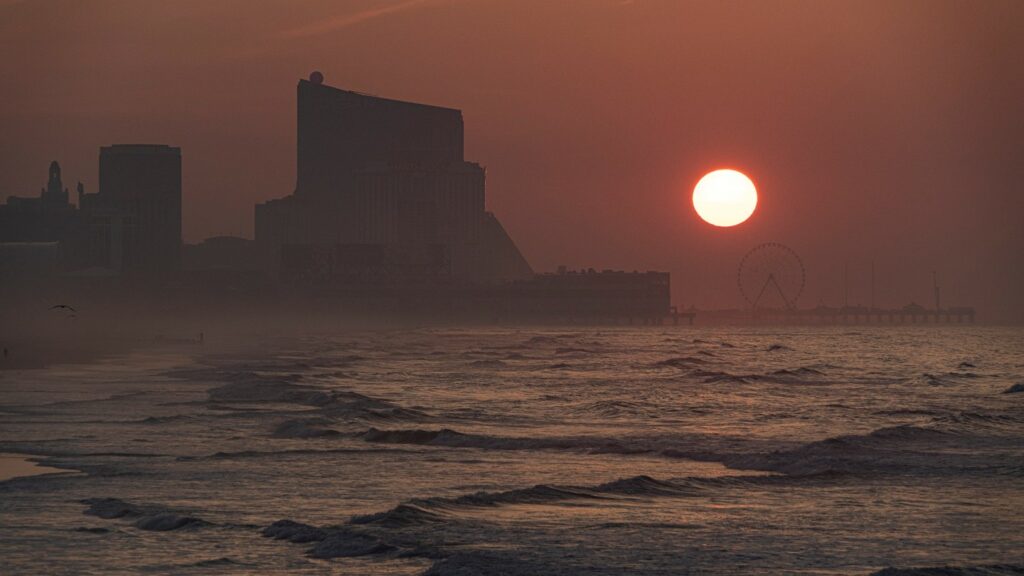 STEVE JASIECKI/Thick haze obscures the sun as it rises over Atlantic City indicating a scorching day ahead.
STEVE JASIECKI/Thick haze obscures the sun as it rises over Atlantic City indicating a scorching day ahead.
Submitted by STEVE JASIECKI
It's common knowledge that cities are hotter than the surrounding countryside. That's because buildings, roads and other structures absorb the sun's radiation and reflect the heat in higher concentrations. Add to that automobiles, heat generating equipment and the reduction of air flow due to the close proximity of buildings and you will get quite a stifling city.
This island of heat in cities is known as the Urban Heat Island Effect and can raise temperatures several degrees higher than their rural counterparts.
High temperature days are stressful, but the additional heat contributed by the heat island effect creates higher operating costs for families and city government. Just a 2-degree increase in temperature can increase the demand for electricity as much as 9%.
Extreme high temperatures can buckle roads, scorch landscaping and cause other infrastructure damage. Time delays, rerouting traffic and structural repairs can end up costing a city millions of dollars. Heat related illness, such as heat exhaustion and heat stroke, are more likely to increase, particularly among the elderly and children. Respiratory illnesses also rise because of increased air pollution from the demand for energy.
Cities have been taking steps to lower the risk of extreme heat periods. Warning systems alert people of an upcoming heat risk while cooling centers offer relief for those who do not have air conditioning. Nevertheless, structural changes are needed to reduce the heat.
The heat island effect has caused planners and developers to rethink the conventional trends used for development. They have developed strategies to reduce heat buildup and increase air circulation. Many of these plans incorporate nature into urban settings.
Here is a sampling of some of the strategies being undertaken in cities:
For a more detailed look into the heat island effect, see Reducing Urban Heat Islands: Compendium of Strategies at https://www.epa.gov/sites/default/files/2017-05/documents/reducing_urban_heat_islands_ch_6.pdf